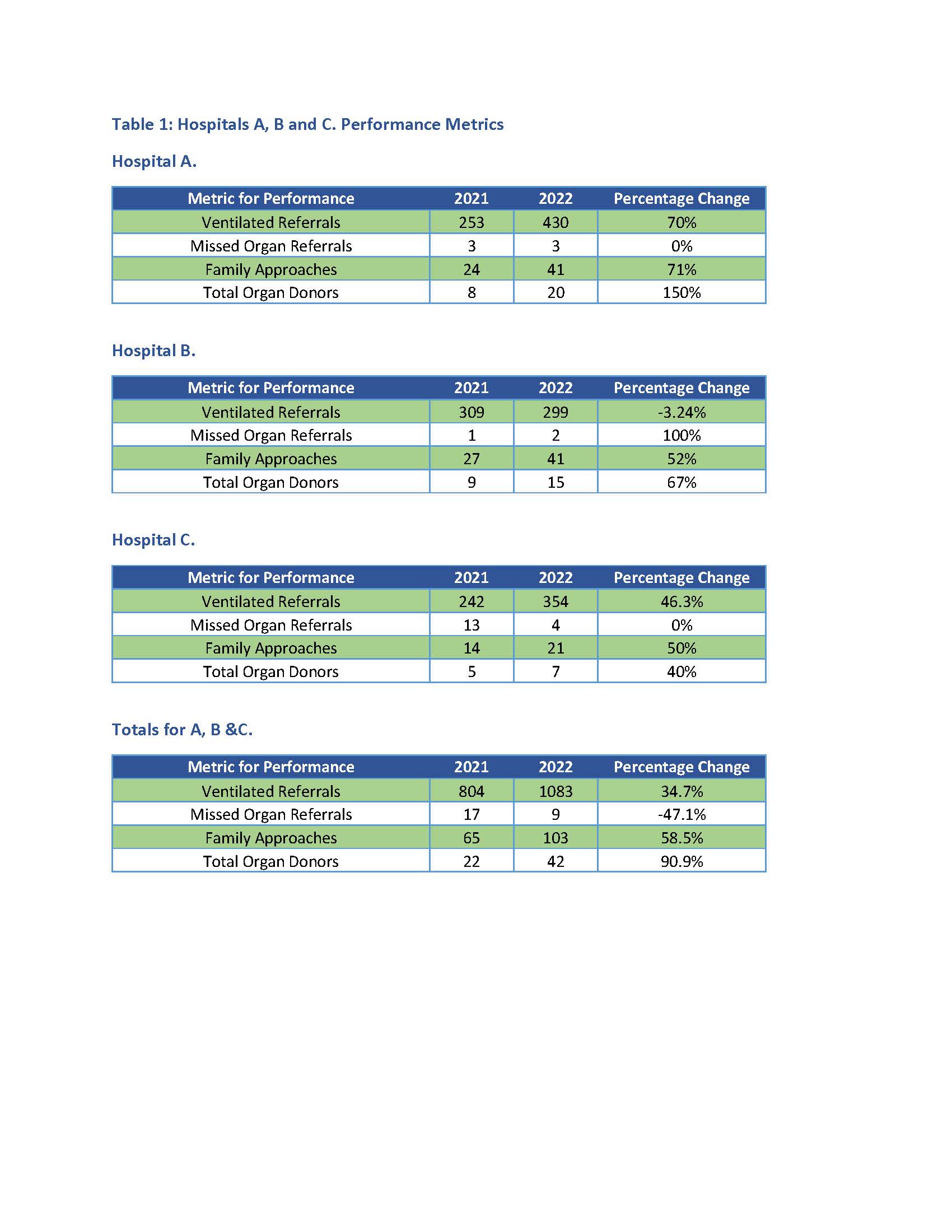Overview of one hospital system’s response to the implementation of expanded referral criteria and resulting donation success
Jessica Abundo1, Lance Eliason1.
1Hospital Services, Nevada Donor Network, Las Vegas, NV, United States
Purpose: The purpose of the initiative was to mitigate missed donation opportunities and increase positive donation outcomes aligned with newly released regulatory guidelines. A new referral process was identified and implemented in three acute care hospital facilities within the same system to ensure hospital compliance and increase donation opportunities.
Methods: The method began with a revision to the organ donation agreements between the OPO and three donor hospitals in a system. The change designates the referral of any patient who is intubated and mechanically ventilated in a critical or intermediate care unit for donation evaluation. To ensure compliance by hospital personnel to the new process, meetings to connect with critical and intermediate care unit leadership were conducted to develop a plan that was efficient and worked best for each unit’s workflow and personnel. These meetings resulted in tasking non-bedside staff to assist with vented referral submissions as they are not directly tending to the patient’s needs post-intubation. Additional hospital support staff were also hired and educated on the referral process. To reduce the number of late or missed referrals, a weekly report is created for unit leadership to review the timeliness of each referral. The report allows for real-time feedback and correction to late vented referrals. In one of the donor hospitals included in this initiative, a process was implemented which required a vented referral be made to the OPO before transfer from the Emergency Department to the Intensive Care Unit could be completed.
Results: In a comparison between 2021 to 2022, the combined results for the hospitals showed an increase in ventilated referrals by 34.7%, a decrease in missed organ referrals by 47.1%, an increase in family approaches by 58.5%, and an increase in total organ donors by 90.9%, year-over-year. These metrics are outlined in Table 1: Hospitals A, B and C. Performance Metrics. Additionally, the new vented referral process aids in meeting regulatory requirements, and staff are accountable for compliance to the process by hospital leaders.

Conclusion: Through process efficiencies and positive donation outcomes, impactful results were identified due to new vented referral criteria and partner collaboration in one hospital system of acute care, non-trauma donor hospitals in a metropolitan area. The success of this initiative reflects the potential to adjust referral criteria and expand the reach for donation opportunities elsewhere.